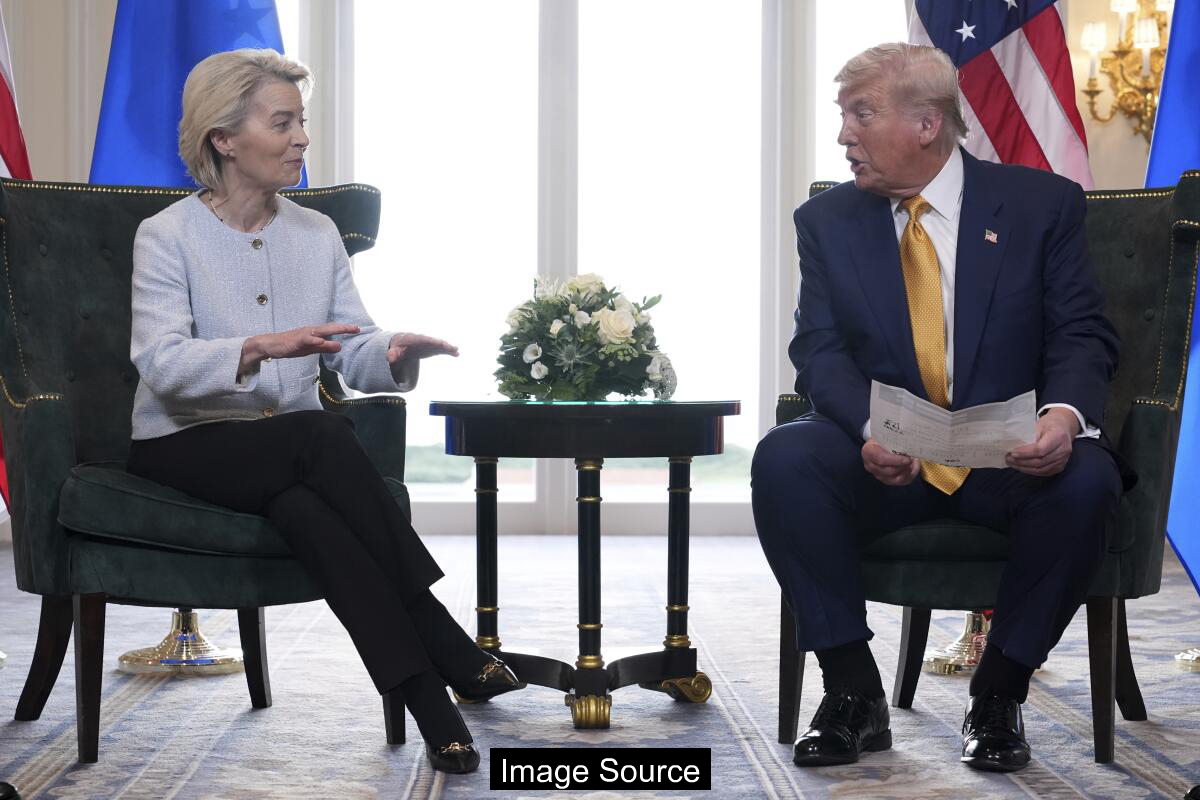Trade representatives from the United States and European Union have made significant progress in recent negotiations, drafting a preliminary framework that addresses key economic barriers. The emerging agreement signals a potential breakthrough in transatlantic commercial relations, though critical details remain under discussion and final ratification is not yet assured.

Transatlantic Trade Deal Breakthrough
President Trump and European Commission President Ursula von der Leyen have negotiated a significant trade agreement that introduces a 15% import tax on 70% of European goods exported to the United States. The deal represents a complex diplomatic effort to stabilize trans-Atlantic economic relations after years of trade tensions. Spanning multiple economic sectors, the agreement aims to provide a framework for future negotiations and reduce existing trade barriers.
The bilateral trade relationship involves approximately $2 trillion in annual business, making it the largest of its kind globally. Both sides characterized the three-and-a-half-page document as a preliminary political commitment rather than a legally binding treaty. Key provisions include the 15% tariff on most EU goods and zero tariffs on U.S. cars and industrial goods exported to the EU.
Specific exceptions were negotiated for critical sectors like aircraft parts, generic pharmaceuticals, and pharmaceutical ingredients. The agreement signals a strategic approach to managing trade complexities between two major economic powers, with potential for further refinement in subsequent discussions.
Tariff Mechanics and Economic Implications
The new tariff structure represents a significant departure from previous trade norms, with rates substantially higher than pre-Trump era levels. Economists warn that these elevated tariffs could potentially slow economic growth and lead to increased consumer prices. The 15% tariff will be applied at the U.S. end, either reducing importing businesses’ profits or being passed directly to consumers.
American businesses importing European goods will face immediate financial pressures. They must decide whether to absorb the additional costs or transfer them to customers. This economic calculus could reshape competitive dynamics across multiple industries.
The deal includes nonbinding commitments for substantial economic interactions, including $750 billion in U.S. energy purchases and $600 billion in EU company investments in the United States. These projections are based on European Commission assessments of anticipated private sector activities.
Sector-Specific Challenges
Certain industries face particular uncertainty under the new trade framework. Wine and spirits, which previously enjoyed zero tariffs since a 1997 trade deal, are now subject to the 15% tariff. This development has raised concerns among American distillers about future export opportunities and potential retaliatory measures.
Steel imports represent another unresolved area, with proposals for tariff rate quotas still pending further negotiations. The EU has suspended retaliatory tariffs on U.S. goods until February 5, 2026, providing a temporary window for continued dialogue.
European officials, including Trade Negotiator Maros Sefcovic, have emphasized that the current agreement is not a final settlement but a stepping stone toward more comprehensive trade relations. They view the deal as a mechanism to prevent a potentially destructive trade war while maintaining diplomatic and economic flexibility.
Trade Deal FAQ
What are the primary implications of this trade deal? The agreement introduces a 15% tariff on most European goods exported to the United States, with exceptions for specific industrial and pharmaceutical sectors. It aims to stabilize trans-Atlantic trade relations and provide a framework for future negotiations.
How long will these tariff arrangements remain in effect? While the current document is a political commitment rather than a legally binding treaty, both sides have indicated ongoing discussions. The EU has suspended retaliatory tariffs until February 2026, suggesting a provisional arrangement with potential for modification.
Political and Diplomatic Perspectives
European Commission President Ursula von der Leyen positioned the deal as a strategic compromise, highlighting the reduction of the previous 27.5% U.S. tariff on European cars. She emphasized that the agreement restores ‘clarity and coherence’ to transatlantic trade while leaving room for future refinements.
Trump administration officials, including Commerce Secretary Howard Lutnick, celebrated the deal as a significant victory for American workers and industries. They portrayed the tariffs as a tool for protecting national economic interests and reshaping international trade dynamics.
The nuanced diplomatic language from both sides suggests a delicate balance between assertive negotiation and maintaining collaborative economic relationships. Each party seeks to demonstrate strength while avoiding escalatory trade conflicts.
Strategic Summary
The transatlantic trade deal represents a complex negotiation addressing long-standing economic tensions. By establishing a new tariff framework with strategic exceptions, the United States and European Union have created a provisional roadmap for future economic interactions.
Key outcomes include reduced uncertainty for businesses, potential mechanisms for further negotiation, and a commitment to preventing destructive trade conflicts. The agreement reflects the intricate balance of economic diplomacy in a rapidly changing global landscape.
Continued dialogue and flexibility will be crucial in implementing and potentially revising these trade arrangements. Businesses, policymakers, and economic analysts will closely monitor the practical implications of this landmark agreement.
※ This article summarizes publicly available reporting and is provided for general information only. It is not legal, medical, or investment advice. Please consult a qualified professional for decisions.
Source: latimes.com